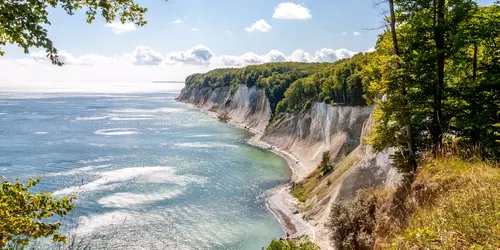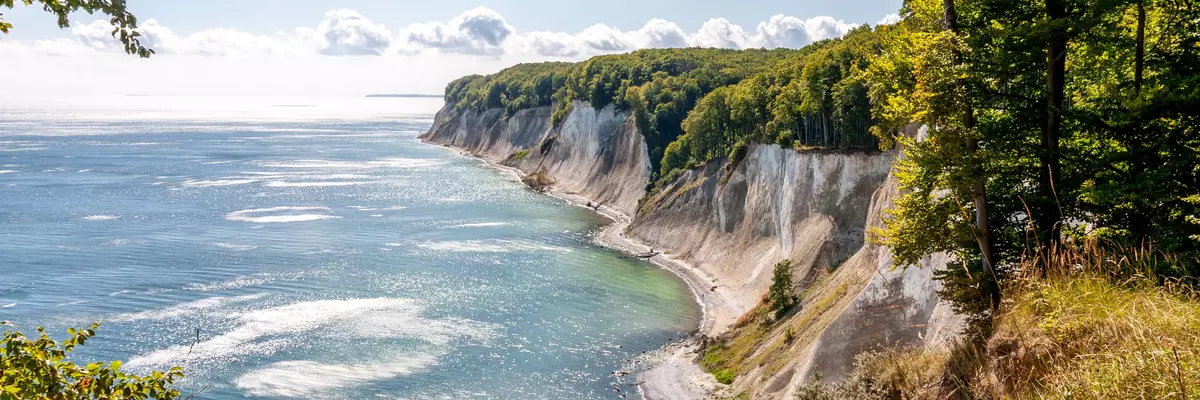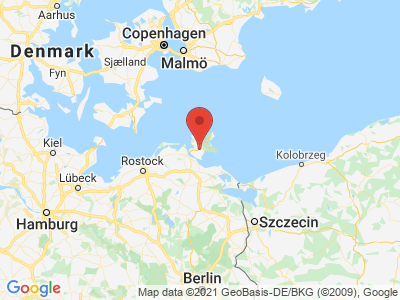Climate Table Rügen
Jan | Feb | Mar | Apr | May | Jun | Jul | Aug | Sep | Oct | Nov | Dec | |
|---|---|---|---|---|---|---|---|---|---|---|---|---|
| Max. Temperature | 1° | 2° | 5° | 10° | 15° | 19° | 20° | 20° | 17° | 12° | 7° | 3° |
| Min. Temperature | -3° | -2° | 0° | 3° | 7° | 11° | 13° | 13° | 10° | 7° | 3° | -1° |
| Sun Hours | 1 | 2 | 4 | 6 | 7 | 9 | 7 | 7 | 4 | 3 | 1 | 1 |
| Water Temperature | 3° | 2° | 3° | 4° | 7° | 12° | 16° | 17° | 15° | 12° | 8° | 4° |
| Rain Days | 10 | 8 | 9 | 10 | 8 | 9 | 12 | 10 | 9 | 9 | 12 | 11 |
The climate year of Rügen
With low air pollution and sea air charged with salts from the sea, Rügen has a temperate stimulating climate. In the east of the island the influence of the continental climate is stronger than in the west and therefore less stimulating. Autumn is much longer in relation to other parts of Germany, because the warmed Baltic Sea provides warm temperatures, although spring is a little longer in coming. Precipitation is not very abundant, but high humidity is always present. A light breeze is also always present, which helps to influence the climate. Health and wellness is very important on Rügen and the island is ideal for a stay of allergy sufferers, who can breathe freely here. The optimal recreational effect is also achieved in winter.
General information about Rügen
The island is connected to the Hanseatic city of Stralsund, which is the gateway to the island of Rügen, by the Rügen Dam and the Rügen Bridge. The coast is strongly dissected by headlands, sea bays and lagoons and is very popular with holidaymakers due to the landscape with sandy bathing bays. In June 2011, UNESCO included the Jasmund National Park on the Jasmund Peninsula in the list of World Natural Heritage Sites. Visitors will find an exceptionally high beech population and, of course, the world-famous chalk cliffs. The National Park Center is located at the foot of the Königstuhl, which offers information about the park with a multivision cinema. The Königstuhl with the 118 m high chalk cliff of the Stubbenkammer is the landmark of the island, the Piekberg with 161 m above sea level the highest elevation. The easily accessible viewing platform at the very top is a visitor highlight, and visitors can reach the beach below the gigantic rock via 300 wooden steps. Other attractions on the island include Cape Arkona, the seaside resort of Prora, the Granitz hunting lodge, and for several years the Störtebeker Festival has been very popular.
Tourism Rügen
Between April and October most guests visit the island of Rügen, the main season ranges from June to August, but even in winter there are many people looking for recreation. Temperatures of up to 20°C are already measured in March and from May the thermometer can show 30°C, but the thermometer will not climb to more than 35°C even in July and August. The sea breeze that starts in the morning ensures that it never gets too hot on the beach. However, it dies down again in the evening and it becomes cool. The sun shines on average 1870 hours a year, on 65 - 100 days more than ten hours and the sunniest month is June.


